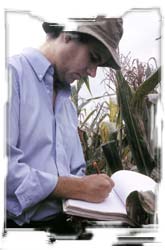Bangladesh Country Almanac version 3.0 released
The third edition of the Bangladesh Country Almanac (BCA) was released at a workshop held at the Jahangir Nagar University, Savar, chaired by its Vice Chancellor in April. In May and June a dissemination workshop and nine hands-on training workshops have been conducted with different organizations across Bangladesh and benefitting about 380 researchers, academics, post graduate students, and extension and NGO personnel.
The Almanac developed by CIMMYT in close cooperation with Bangladeshi partners combines on a single CD ROM both spatial and attribute data on climate, land and soils, crops, demography, hydrography, infrastructure, health, marketing, livestock, forestry and poverty. It is the most comprehensive offline CD-based database in Bangladesh.
The Almanac is being used to help identify research locations and to aid in designing development programs by extension services and NGOs. The Soil Resource Development Institute (SRDI) of Bangladesh has decided to use the BCA as a platform to deliver field-level data to its headquarters.
CIMMYT and the Bangladesh Agricultural Research Council have organized a policy/ concluding workshop on the BCA for July 9. The Minister and the Secretary, Ministry of Agriculture, will be present as Chief Guest and Special Guest. DGs and Directors of Agricultural Institutes, Vice Chancellors of Universities and the heads of NGOs and International organizations have been invited to give their feedback about the latest release of the country almanac.
 Now that all of CIMMYT’s new program directors have been officially installed, it is time to get acquainted with them, as well as their ideas and plans for the programs. This month we feature Kevin Pixley, director of the Tropical Ecosystems Program.
Now that all of CIMMYT’s new program directors have been officially installed, it is time to get acquainted with them, as well as their ideas and plans for the programs. This month we feature Kevin Pixley, director of the Tropical Ecosystems Program.